Ferrari e-building will propel it into a new era
Ferrari on Friday inaugurated its brand-new ‘e-building’, a state-of-the-art facility that will – from the start of 2026 – roll out the prancing horse’s first full-electric vehicle.
In his inaugural speech, Ferrari CEO Benedetto Vigna announced that the EV will be unveiled in the last quarter of next year, but he wouldn’t be drawn into revealing any specific details about the upcoming vehicle.
Some media reports have suggested the maiden Ferrari EV could cost around 500,000 euros, but Vigna would neither confirm nor deny this price forecast.
He also refused to confirm reports that the new e-building – which entailed a 200m euro investment – would enable Ferrari to boost its annual production output to 20,000 cars (Ferrari last year sold 13,663 cars). Vigna said the e-building was conceived with the intention of increasing “quality of revenue rather than quantity”.
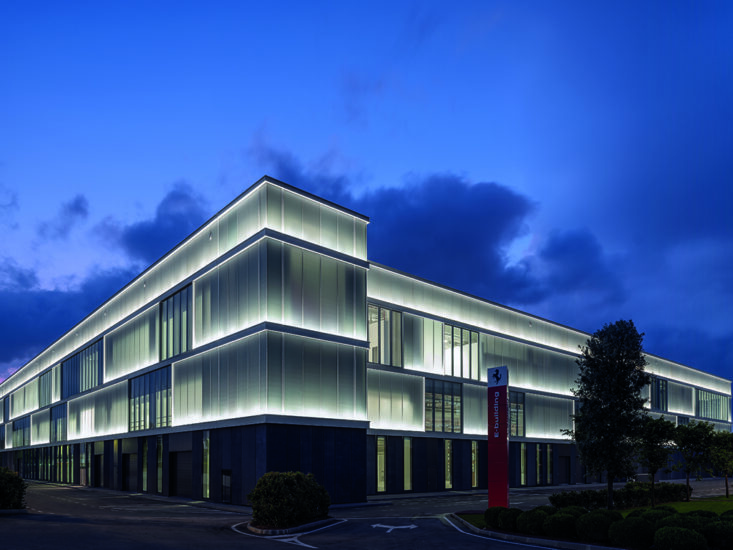
Expounding on the rationale behind the new production facility, Vigna asked, “So why does our new building start with the letter ‘e’? ’E’ stands for three things: energy, evolution and environment.
“Energy because it will allow us to implement our multi-energy product strategy with three powertrains. Evolution since it provides us with much greater flexibility in manufacturing and technological capability. Environment because the e-building represents a key milestone in our journey to carbon neutrality.”
Vigna stated the e-building would, among other things, allow Ferrari to make the strategic components of its electric car in house: the electric engine, the e-axle and the battery module. He added that the cells for the latter would be sourced from external suppliers, but the design and assembly of the battery pack would be done internally by Ferrari.
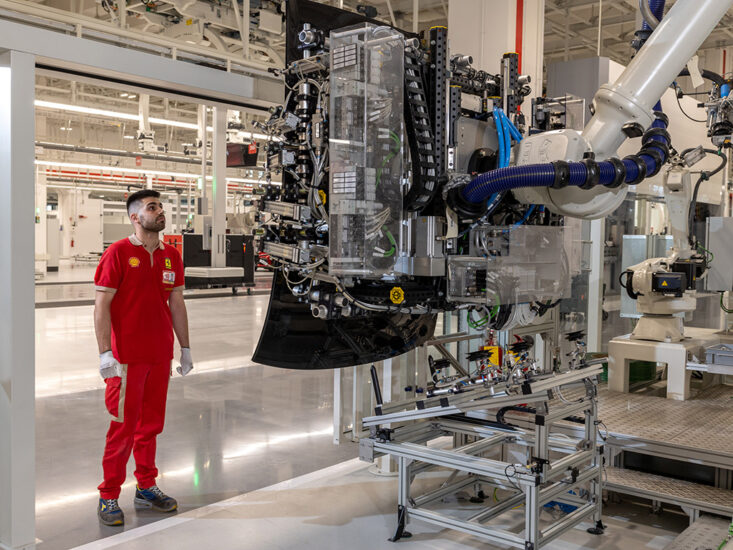
Vigna added that the e-building will enable the company to dedicate more resources to the lucrative business of personalisation and creating tailor-made cars. In addition, the facility will fast-track the process of taking new Ferraris from ideation to production
“I know from experience that to be successful today, you need to have R&D and production running together at the same time in the same place. Otherwise, the time to market is too long.”
Rather than being a dedicated EV plant, Vigna stated the e-building will also assemble all the other cars in Ferrari’s lineup – ranging from the Roma, 296, SF90, Purosangue and 12 Cilindri – as this approach would enable the company to efficiently tailor its output to customer demand.
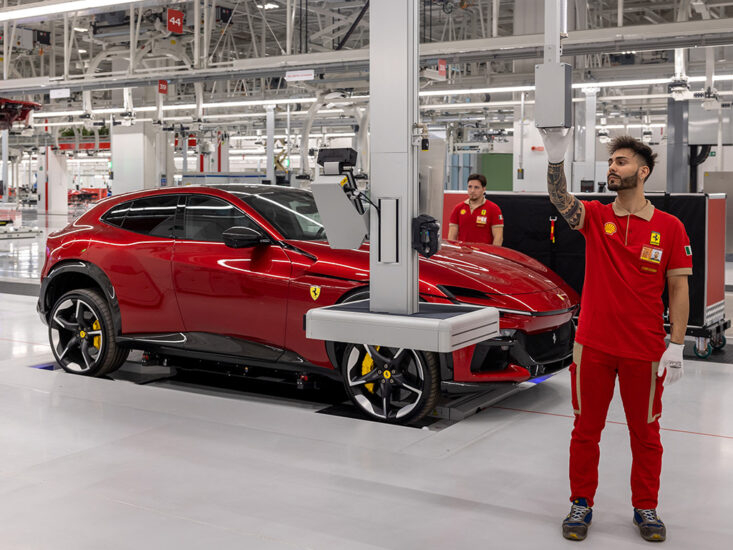
“We believe that technology transitions do not happen overnight, and the ultimate choice must stay in the hands of our clients,” Vigna said.
“We also believe there is no single solution to future automotive powertrains. Technological neutrality is a principle for us – and thus, we will keep pushing boundaries to drive innovation in every direction.
“Our strategy is to continue to invest in all three powertrains – the so-called three colours: red, representing the internal combustion engine; blue, representing hybrid; and green, representing full electric. This strategy will give our clients maximum freedom of choice.”
Vigna said the full-electric Ferrari demands new technologies, components and processes that the company will design, engineer and handcraft in Maranello. “We have specifically invested in the e-building, it will enable us to keep our know-how in-house and maintain our competitive advantage in the years to come,” he added.
“By mastering this full system, we can make a palpable difference. It will ensure that an electric Ferrari continues to deliver the distinctive driving thrills that all Ferraris have.”
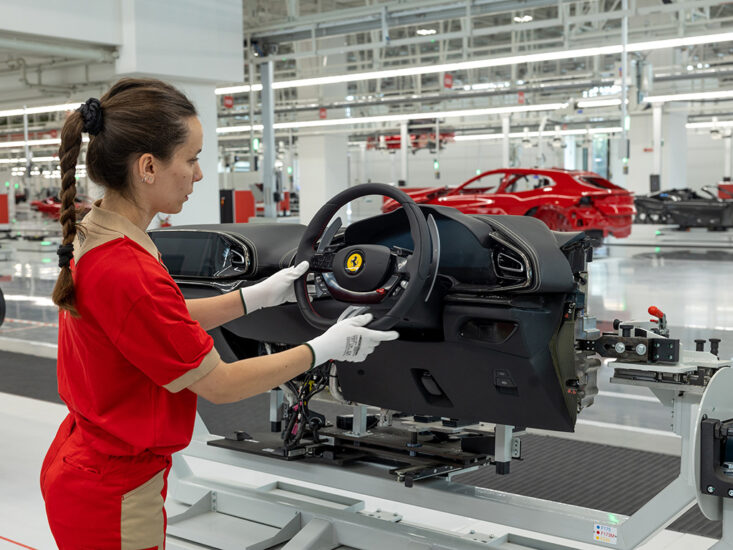
Vigna said the upcoming Ferrari EV would be compatible with existing charging stations but revealed that the company is also working with a technology partner to build its own charging stations.
Asked whether Ferrari’s clients would be sceptical of an offering without a characterful combustion engine, Vigna said: “I’ve spoken to some prospective customers who say: ‘I will not become a Ferrarista until you have an EV’.”
However, combustion-engine purists needn’t be too concerned, as Vigna added: “We will continue to build ICE cars, with or without carbon-neutral fuel. We believe ICE cars still have runway left.”
When quizzed about Euro regulations that will ban the sale of petrol-powered vehicles by 2035, Vigna said, “Things could change. The important thing is to stay flexible and quickly adapt to changes.”
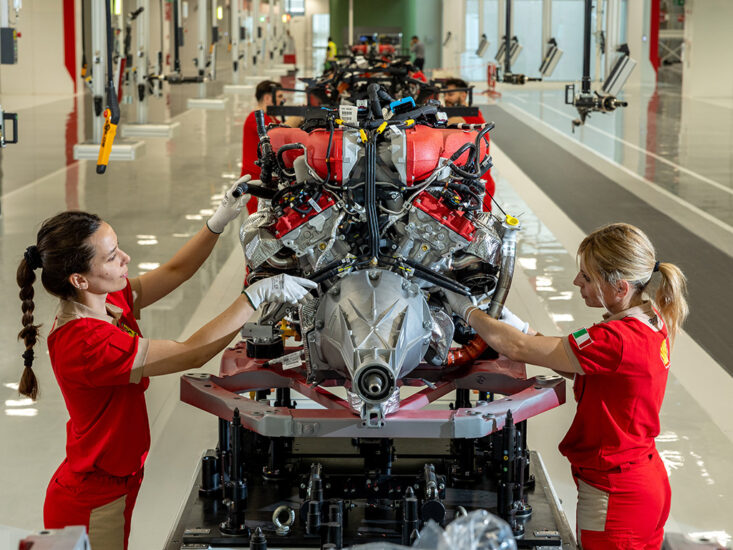
Regarding hydrogen as a propulsion source, Vigna had this to say: “Hydrogen is part of what I call carbon-neutral fuel. We are looking into this, but I don’t see anything happening before 2030.”
Ferrari’s e-building commences testing and validation on Monday, June 24. Production cars (the current models) will begin rolling out in early 2025, with the EV set to join in 2026. The new facility supplements the existing production line rather than replacing it.
















There are no comments. Be the first!